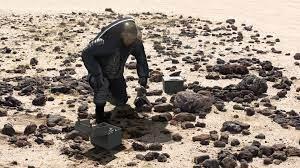

ADITHYA BHARATH
Class of 2026basking ridge, NJ
About
Projects
- "AI in STEM: How Artificial Intelligence is revolutionizing Science and Engineering" with mentor Morteza (Feb. 23, 2025)
- Biomimetics- Key to better Space Suit Design with mentor Humberto (Oct. 2, 2023)
Project Portfolio
AI in STEM: How Artificial Intelligence is revolutionizing Science and Engineering
Started Jan. 15, 2025

Abstract or project description
The development of spacesuit materials is a critical challenge in space exploration, requiring advanced materials that can withstand extreme temperatures, intense radiation, and mechanical stress. Traditional material discovery relies on time-intensive experimentation and trial-and-error synthesis, slowing down innovation and increasing costs. This study explores the potential of Artificial Intelligence (AI) in revolutionizing material selection by analyzing resonance structures and isomeric configurations to predict and optimize key molecular properties.
Using supervised machine learning models, particularly Decision Tree Regression and Random Forest Regression, this research demonstrates that AI can accurately predict tensile strength, thermal resistance, and radiation shielding capacity based on molecular descriptors. The models achieved 99.8% accuracy in predicting material durability and identified resonance energy and isomer type as critical factors influencing performance. AI-driven predictive modeling accelerates the identification of high-performance polymers and composites, significantly reducing the time and cost of material discovery.
Despite its promise, AI-based material selection faces challenges such as limited training data, simulation-reality gaps, and the need for experimental validation. Future research should focus on expanding material databases, integrating reinforcement learning, and validating AI-selected materials in simulated space environments. This study highlights how AI can reshape spacesuit engineering, paving the way for materials that enhance astronaut safety and enable long-term space missions.
Project Portfolio
Biomimetics- Key to better Space Suit Design
Started May 31, 2023

Abstract or project description
Current space suits are expensive, bulky, and hard to maintain. Space exploration will greatly benefit from advancements in space suit technology that allow for greater safety and mobility. Using biomimetics, implementing bio-inspired adaptations of flora and fauna into technology emphasizes the possibility of enhancing our modern-day space suits and revolutionizing the exploration of outer space. The research consists of a review of the current technology conducted to form a baseline and understand current issues and limitations of space suits. The research resulted in understanding four prevalent concerns in space suits for space exploration: Radiation, thermoregulation, debris avoidance, and maneuverability. The research conducted involves the study of natural and biological organisms that have shown evolutionary success in solving these challenges. The research includes practically testing these solutions using three-dimensional printing and home science equipment. This paper begins by examining the high amounts of radiation and biomimetic suits crafted from radioprotective designs and materials. Several lifeforms on Earth can maintain thermoregulation even in the most extreme climates similar to space. The ever-growing debris in space poses a daunting obstacle to lightweight and flexible suits drawn from natural systems combat. Maneuverability poses an important criterion for the success of a space suit to allow the astronaut a larger range of motion outside of the shuttle to make repairs and conduct experiments. The research showed that biomimetics can be a powerful resource to model the next generation of space suits, resolving problems around radiation, thermoregulation, debris avoidance, and maneuverability. The research provides various flora and fauna with these characteristics and demonstrates potential for practical application. In conclusion, the research findings highlight the immense benefits of biomimetics in modern space suits.